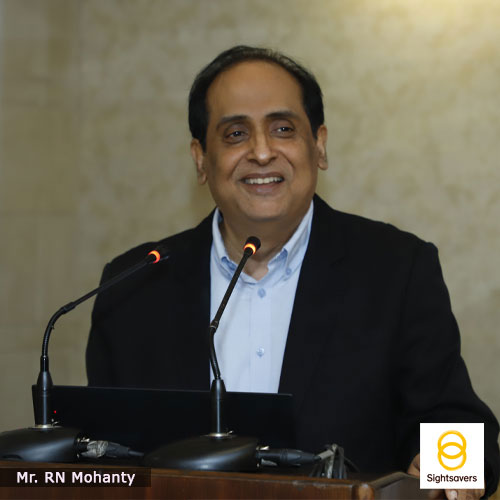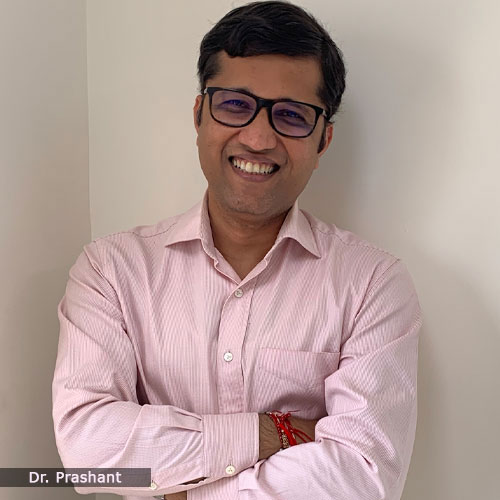ABOUT
Sightsavers is a development organisation that has been working in India since 1966 to eliminate avoidable blindness and to ensure that people who are irreversibly blind are supported adequately to lead lives of independence and dignity. In the last 5 decades:
- Our work has impacted the lives of 55 million people with potential eye problems
- We have carried out 36.4million eye treatments
- We have performed 5 million eye operations with the help of our partners
THE INTERVIEW:
What led to the formation of Sightsavers?
Sir John Wilson, a visionary and pioneer in eye health care founded the Royal Commonwealth Society for the Blind (RCSB). Sir John Wilson, blinded at the age of 12 in an accident in his chemistry lab, often said “First I am a person. Second I am disabled.” His spirit and enthusiasm were infectious. It was his undying zeal that led to the foundation of RCSB now known as Sightsavers.He visited India in the mid-’60s and saw that work for the welfare of the blind was confined to a handful of organisations. India at that time did not have any national program or plan for the blind. The organisation started its work in India in 1966, and during this year worked closely with the National Association for the Blind (NAB). Dr. Rajendra Vyas, one of the pioneers of the NAB, started working with Sir John from 1967 operating mainly from his residence in Bombay, as Mumbai was known then. The organisation was registered in 1970 as the Royal Commonwealth Society for the Blind, under the Bombay Trust Act. Dr. Rajendra Vyas became the first Asia Regional Director of the organisation.
What triggered your interest in Sightsavers?
I have spent the last three decades in the social sector with assignments involving programs in Health,Education, Livelihoods, Disaster Management, and enabling fundraising for various social and economic causes. RN, as I’m fondly addressed by my peers, I’ve held leadership positions at various development sector organisations. My interest lies in being a strategist, and I am a realist in spearheading new initiatives. For Sightsavers, my immediate vision is of transforming 100 districts in the country in the arena of eye health and disability. I try and bring to the table experience of strengthening and managing teams and raising their capabilities. I hold a Master’s degree in Economics and have done my Post Graduation in Human Resource Management. It was during my higher studies days that I was inspired to join the international development field after looking at the impact of poverty on people. Health and education are key areas wherein I would like to bring about a change.
What is the core focus area or thematic interventions of your work?
Sightsavers’ vision is of a world where no one is blind from avoidable causes, and where people with disabilities participate equally in society. A large number of People with Disabilities (PWDs), especially those who suffer from a visual disability, are reeling under poverty, economic and educational deprivation, and are concentrated in the most under-served parts of the country. Sightsavers in India, through its thematic portfolio of Eye Health, Inclusive Education for visually impaired children and Social Inclusion of People with Disabilities, aims to have a significant impact on the lives of the economically and socially marginalised communities and also seeks to influence the policies and practices concerning disabilities in India. Systemic social work is at the core of Sightsavers as a not-for-profit organisation. We are committed to building sustainable program models, which have been endorsed and adopted by the government in our states of operation. Sightsavers focuses on collaborating with various departments of the state governments to scale up operations for our programs.
Could you highlight what areas are covered geographically?
Sightsavers India works in 8 statesand 20 most vulnerable cities, extending eye services to the least served areas, enabling people to lead lives of independence and dignity. The Priority States consists of Bihar, Jharkhand, Chhattisgarh, Odisha, Madhya Pradesh, Rajasthan, Uttar Pradesh, and West Bengal. Services in many regions have remained very poor with increasing backlog due primarily to limited human resources, non-utilization ofhealth services in the government sector and inadequate community mobilization. Sightsavers has identified 100 districts based on eye health indicators and demographics to bring eye services to a few of the most economically and socially marginalised districts. The aspiration is to transform these 100 districts over the next 5 years.
What is your vision and strategy for Sightsavers in India by 2025?
Cataract blindness and Refractive error (RE) are the leading causes of global visual impairment or blindness affecting more than 2.2 billion people worldwide. In addition to this rising burden of eye care, we are seeing increased inequalities, with women and girls, people with disabilities, and people living in low and middle-income countries experiencing higher burdens of vision impairment and blindness.Sightsavers Rural Eye Health Strategy sets out three clear objectives to respond to these challenges with an overall aim “ To reduce the prevalence of blindness by focusing on cataract blindness amongst the needy population in alignment with principlesof universal coverage of ( eye) health services in rural communities” with a target to reduce the prevalence of blindness to less than 0.3 % in selected High Impact districts of 8 states of India by 2025.
We are also expanding our Truckers Eye Health Programme to include bus drivers under its ambit. Our goal for Urban Eye Health is to provide equitable (eye) health services for the urban poor in slums and other underserved areas of selected cities.
Overall, Sightsavers seeks to make eye care an integral part of universal health coverage in the next five years. We would like to perform about 2 million sight restoration surgeries in the next five years.
For Inclusive Education Programme, Sightsavers would like to align itself with National Education Policy 2020 and renew its focus on learning outcomes and enablement for children with disabilities (CWDs). Thus, developing innovative pedagogies to simplify learning processes and working with families of CWDs to create a favorable environment among others will remain critical. Under our Social Inclusion Programme, Sightsavers will work towards increasing beneficiary coverage. People with disabilities will be empowered through skill enhancement for gainful employment along with the key focus on creating an enabling environment.
What are your plans in terms of increasing the team size in India?
We are generally a very lean organisation and manage our work with minimum HR that is required to run our programmes. While we may not increase our team size, we are aware that we need different and new skillsets to implement our next strategy and we will ensure we have those skillsets either in-house or choose partners who have those required skills.
What are the types of contributions people can do which make a difference?
Discourse and dialogue towards creating an equitable world for people with disability, and forming accessible avenues for eye health is a key contribution for the work that Sightsavers does. Financial contribution for sustaining and supporting our programmes is critical as well.
How do you manage and track funds to run Sightsavers, being a substantial organization?
Vital support from governments and other institutions helps us in our mission to eliminate avoidable blindness and fight for the rights of people with disabilities. Individual donors and corporate support in a transparent manner are used to run the many programs of Sightsavers. We receive international institutional grants from organisation like the European Union along with support from corporates and individuals alike.Each of our partners has been an integral part in helping us shape a programme for reaching out to a life where it is most needed. The corporate partner’s goal and objectives are seamlessly blended with our programmes to demonstrate the corporate organisation’s enthusiasm to fulfill its corporate social responsibility.Sightsavers is also Verified by GuideStar Indiafor Commitment to Transparency in addition to being certified by Credibility Alliance.
What are the challenges faced in Rural areas while running a camp/drive?
Unless eyesight deteriorates to a level that significantly compromises normal human functioning, people tend to relegate the need for care.In India, good quality cataract and refractive services reach out to only half of the people in need. The cause of this is a lack of social or family support and either direct or indirect costs. Most people are aware of their issues regarding eye health and the possibility of treatment for it. However, they are apprehensive of either the treatment procedure, its affordability or are deterred by previous experiences from the other members of their community.
What would your message be, especially to the youth of India in terms of contributing back to society?
I believe that our youth is way ahead in giving back to society and contributing towards nation-building. If at all, I would like to ask of them to give back to society in whatever way they can—time, knowledge, intellect, their services, and financial support among others. There is a lot to be done, and if we all make a small contribution it always goes a long way.




